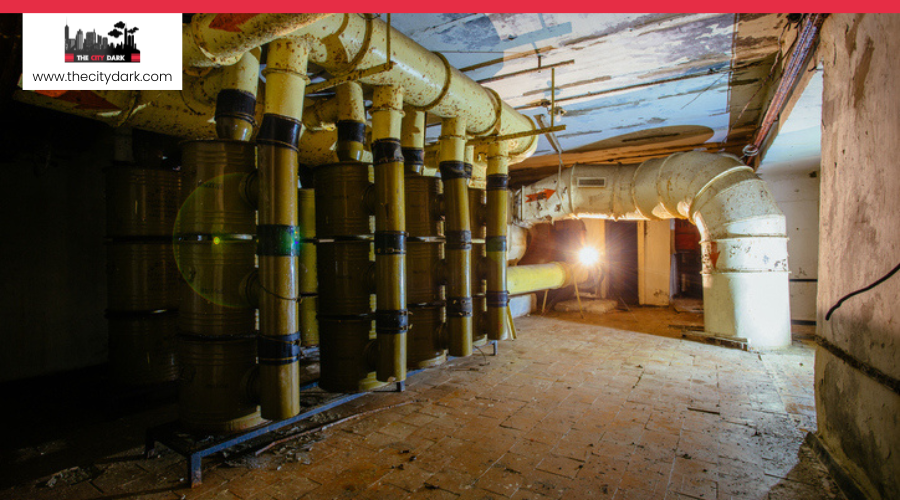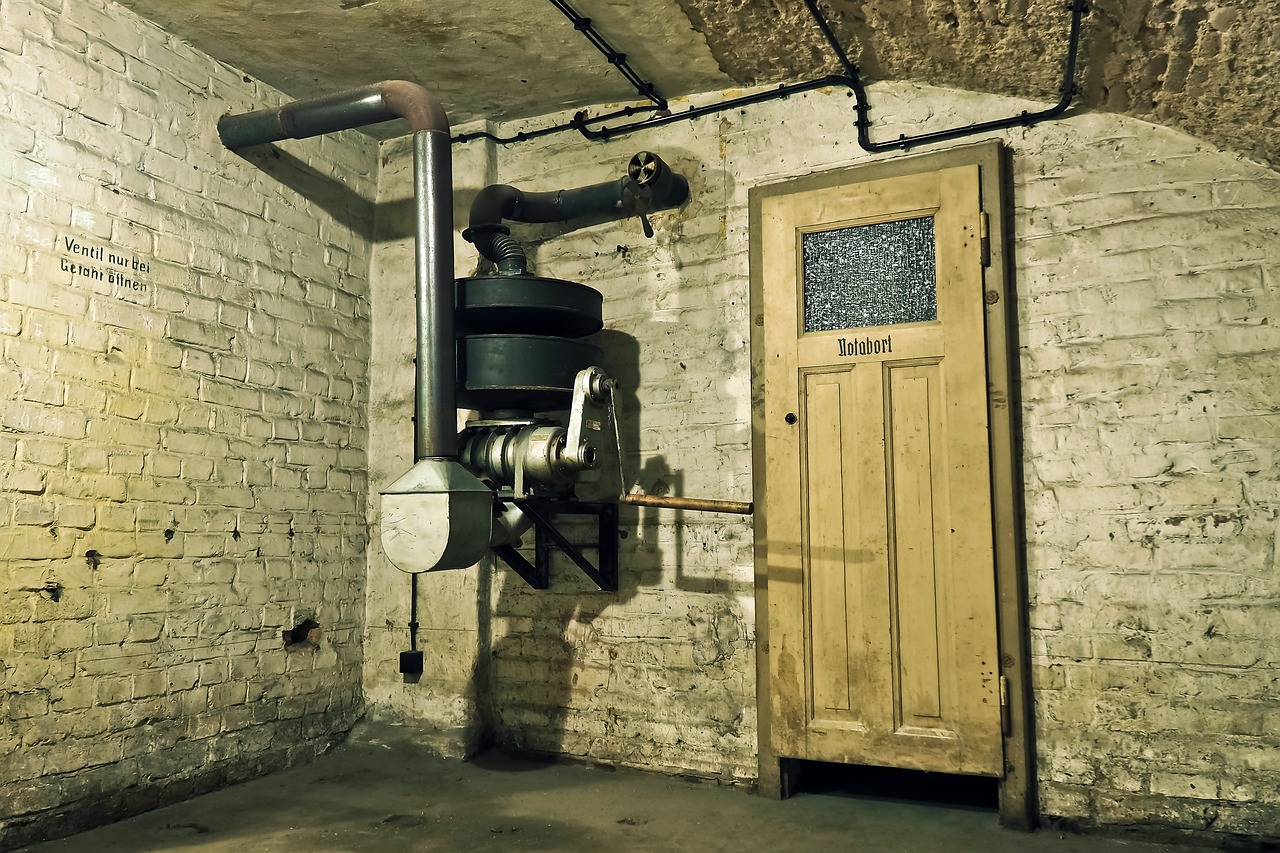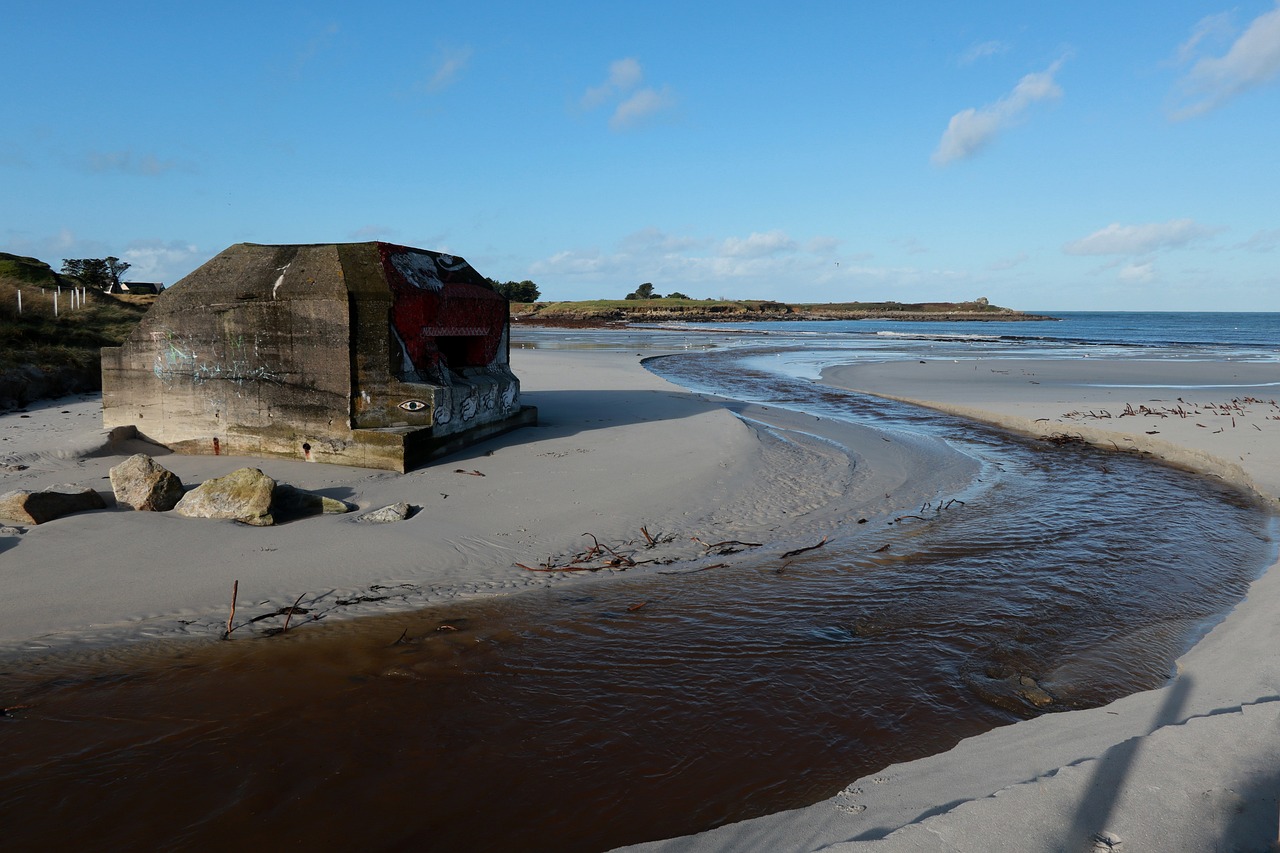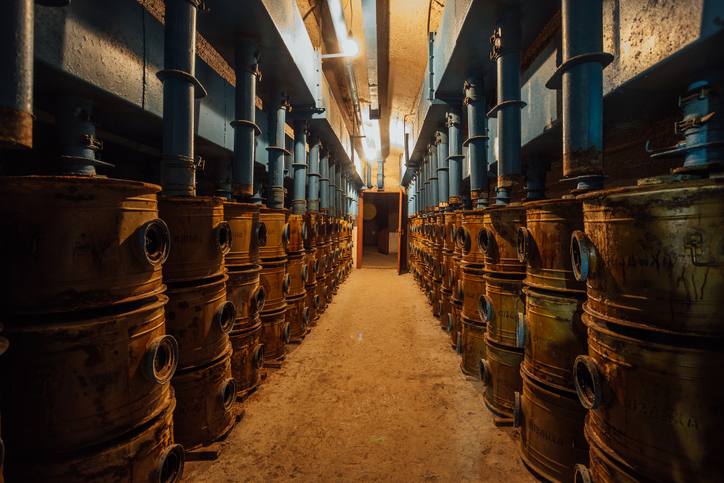While the idea of living in a bunker evokes images of cramped, austere conditions, the reality is that with the right air filtration system, your subterranean haven can offer a sanctuary of clean, breathable air. You’re stepping into a world where the air you breathe is as meticulously curated as a fine wine, and understanding the nuances of NBC (Nuclear, Biological, Chemical) air filtration systems is crucial to this endeavor.
This guide isn’t just a collection of technical manuals and product reviews; it’s your lifeline in ensuring the air in your bunker remains uncontaminated and life-sustaining, no matter what’s happening above ground. As you navigate the complexities of selecting, installing, and maintaining these systems, you’ll find that the peace of mind they provide is invaluable.
So, let’s embark on this journey together, and uncover how you can create a breathable oasis in the depths of your bunker, ensuring your long-term underground living is safe and comfortable.
Key Takeaways
- NBC air filtration systems are essential for creating a safe and toxic-free environment in long-term bunker living.
- These systems consist of various components such as blast valves, pre-filters, air ducts, NBC filters, electric blowers, and overpressure valves.
- NBC filters incorporate HEPA filters and activated carbon to trap particulate matter and adsorb gases and vapors.
- Regular maintenance, including filter replacement, cleaning of system components, and airflow monitoring, is crucial for the efficient functioning of the air filtration system in the bunker.
Understanding NBC Air Filtration
To ensure your safety in a bunker, it’s vital to grasp the workings of NBC air filtration systems. These systems are your lifeline, designed to supply fresh, filtered air and create a toxic-free area within shelters, vehicles, and mobile platforms. They’re tailored to protect you from contaminated environments and prevent dangerous CO2 concentration, crucial for long-term living in potentially hazardous conditions.
NBC filtration systems are categorized based on their application, ranging from simple escape shelters to advanced NBC shelters with airtight designs and air regeneration systems. The filtration process varies, with pulling systems used in stationary shelters and pushing systems in vehicles and mobile shelters. Key components include blast valves, pre-filters, air ducts, NBC filters, electric blowers, and overpressure valves.
At the heart of these systems are NBC filters, incorporating layers like the HEPA filter and activated carbon. The HEPA filter traps particulate matter, while activated carbon adsorbs gases and vapors, crucial steps in ensuring that the air you breathe is free from contaminants. Understanding these components and their functions is essential for maintaining a safe and habitable bunker environment.
Importance of NBC Systems
NBC filtration systems often play a crucial role in ensuring your bunker remains a safe haven, free from external pollutants and hazardous gases. These specialized systems are your frontline defense against a contaminated environment, meticulously working to prevent dangerous carbon dioxide build-ups and maintaining a toxic-free area within your protected space.
It’s not just about keeping the bad air out; it’s also about ensuring a continuous flow of fresh, filtered air supply to sustain life over long periods.
Proper ventilation, facilitated by an NBC filtration system, is essential in preserving oxygen levels, removing internal pollutants, and guaranteeing the air you breathe is safe. European and Israeli-made models stand out for their efficiency, affordability, and the reassurance of third-party testing and certification. These systems are adept at filtering a wide spectrum of particulates and gases, including those from biological and chemical sources, and even volatile warfare agents.
Moreover, the design where the intake hose pulls in outside air, and the system maintains a positive relative pressure, ensures that your bunker is sealed off from any unfiltered external air. This setup is crucial for creating a protected space that’s truly secure from all biological and chemical threats outside.
Types of Bunker Shelters
When planning your long-term bunker living, you’ll find there are both underground and above-ground shelters to consider. Each type has its unique features and requirements, especially when it comes to air filtration systems.
It’s essential you understand the differences to choose the best fit for your survival strategy.
Underground Bunker Varieties
Understanding the variety of underground bunker shelters is essential, as they range from simple escape havens to complex structures with air regeneration systems. Here’s a breakdown to keep you engaged:
- Simple/Escape Shelters
- For short stays
- Minimal ventilation
- Longer Stay Shelters
- Ventilation systems without NBC (Nuclear, Biological, Chemical) protection
- Suitable for extended periods
- NBC Shelters
- Airtight design with NBC filter systems
- Include blast valves for protection against explosions
- Can operate in isolation with air regeneration systems, ensuring safe air changes per hour
Each type focuses on life support essentials to varying degrees, from basic sheltering needs to comprehensive protection and sustainable living environments.
Above-Ground Shelter Types
Exploring the variety of above-ground bunker shelters reveals options ranging from concrete bunkers to innovative monolithic dome shelters, each offering unique benefits for protection and survivability. It’s essential to understand how these shelters can withstand threats like nuclear explosions and maintain the pressure inside, especially when considering air filters. Here’s a quick guide:
| Shelter Type | Key Feature |
|---|---|
| Concrete Bunkers | Durable against various threats |
| Quonset Huts | Quick assembly and mobility |
| Shipping Container | Cost-effective and readily available |
| Earthbag Bunkers | Affordable and adaptable to terrains |
| Monolithic Domes | Energy-efficient with strength and durability |
Each type of above-ground shelter offers a unique approach to long-term survivability, especially when equipped with advanced air filtration systems to ensure a safe interior environment.
Filtration Process Explained
You’re now equipped with the basics of NBC filtration systems; it’s time to focus on how these systems actually work.
We’ll explore the types of filters used, understand the maintenance they require, and measure system efficiency to guarantee your safety in a bunker.
This knowledge is crucial for ensuring your long-term comfort and protection in any shelter environment.
Types of Filters
How do various filters ensure your bunker remains a safe haven from external hazards? Understanding the types of filters used in air filtration systems is key. Here’s a quick rundown:
Pulling filtration system
- Common in shelters.
- Uses a blast valve to block external blasts.
- Ensures a supply of fresh, filtered air.
Pushing system
- Found in vehicles and some shelters.
- Forces air through filters to interior spaces.
NBC filter
- Combines mechanical filtration to catch larger particles.
- Adsorption stages remove gases and vapors.
These systems work tirelessly to maintain the quality of air filter performance, ensuring that larger particles and contaminants are efficiently removed. By choosing the right air filter, you’re investing in a continuous supply of fresh, filtered air for your bunker.
Maintenance Requirements
To ensure your bunker’s air remains clean and safe, regular maintenance of the filtration system is crucial. This means you’ll need to routinely inspect and replace filters to keep air purification efficient. Don’t overlook the importance of cleaning and sanitizing system components, as this prevents microbial growth and contamination.
It’s also vital to monitor and adjust airflow rates to maintain positive pressure, ensuring your shelter has the necessary air supply. Additionally, conducting smoke tests and volumetric tests will test the functionality of air filtration components.
Regularly checking the system’s performance guarantees it can support the intended number of occupants, making these maintenance requirements essential for the longevity of your bunker’s life-support systems.
System Efficiency Metrics
Understanding the efficiency of your bunker’s air filtration system begins with familiarizing yourself with the key metrics that gauge its performance. These metrics are crucial for ensuring a safe environment, free from external threats and internal pollutants. Here’s what you need to keep an eye on:
Blast Wave Resistance
- Protects against external explosions
- Ensures structural integrity of the system
Carbon Dioxide Scrubbing Efficiency
- Measures the system’s ability to remove CO2
- Keeps the air breathable and prevents toxicity
Volume of Air Processed vs. Pressure in the Shelter
- Balances the amount of filtered air with maintaining a safe pressure
- Prevents overpressure or vacuum conditions that could compromise the shelter
These metrics are essential for maintaining a livable and safe environment in your bunker.
Key Components
In discussing the key components of NBC air filtration systems, it’s essential to recognize their critical role in ensuring a safe, breathable environment within long-term bunkers. These components are ingeniously designed to work together, ensuring the air inside your enclosed space remains uncontaminated and fresh.
Firstly, the blast valve is your first line of defense, protecting against external explosions and ensuring that the integrity of your shelter isn’t compromised. It’s crucial for maintaining a safe haven during emergencies.
Then, there’s the prefilter, which tackles coarse dust, preventing these larger particles from clogging the system. This step is vital for the longevity and efficiency of your filtration setup.
Air ducts are strategically designed with separate lines for dirty and incoming clean air, preventing cross-contamination and ensuring that only purified air circulates within your bunker.
The heart of the system, the NBC filter, employs mechanical filtration and adsorption stages to meticulously remove pollutants and toxic substances, delivering fresh air.
Selection Criteria
Selecting the right air filtration system requires considering several critical factors, ensuring your bunker’s air remains safe and breathable for the long haul. Your choice should hinge on the bunker’s specifics and the potential challenges you might face. To guide you, here are some pivotal criteria:
Type and Duration of Shelter Living
- Short-term vs. long-term needs can drastically influence system specifications.
Filtration Capacity
- Ability to filter particulates and gases, crucial against chemical threats.
- Look for systems capable of handling a broad spectrum of contaminants.
Certification and Testing
- Third-party validation, especially from European and Israeli sources, for NBC (nuclear, biological, chemical) protection.
Airflow and Size
- Consider the amount of air (in cubic feet) needed per person.
- Assess the differential pressure, ensuring it matches your shelter’s design.
Maintenance and Monitoring
- Easy-to-maintain systems with robust monitoring capabilities for continuous safety.
When evaluating these factors, remember that the amount of air, measured in cubic feet per person, and the system’s ability to maintain differential pressure are crucial for your bunker’s long-term habitability. Choose wisely to keep your sanctuary safe and breathable.
Maintenance Practices
To ensure your bunker’s air filtration system continues to operate effectively, regular maintenance is essential. This includes regularly checking and replacing the prefilter to eliminate coarse dust and large particles. Such maintenance practices are crucial for keeping the air in your bunker clean and safe, especially in the event of industrial accidents where air quality can be severely compromised.
You’ll also need to monitor and test blast valves, airflow control valves, and overpressure valves to ensure they’re functioning properly. These components are vital for maintaining the right pressure per square inch within your shelter and for protecting against high-pressure scenarios.
Furthermore, inspecting and changing NBC filter components, such as activated carbon and mechanical filtration stages, according to the manufacturer’s recommendations, is key. These steps help in removing contaminants and ensuring that your air filtration system is working at its best.
Make sure electric blowers are functioning optimally. They play a critical role in overcoming pressure drops and maintaining overpressure in the shelter, which is essential for your safety in extreme conditions.
Lastly, don’t forget to periodically test and calibrate life support indicators, like thermometers, humidity meters, and gas alarms. Accurate monitoring of shelter air quality is indispensable for long-term bunker living.
Essential Equipment
For long-term bunker living, you’ll need various types of NBC filtration systems, each designed for specific shelter configurations and safety requirements. Understanding the essential equipment involved in these systems is key to ensuring your shelter remains a safe haven, regardless of the external environment.
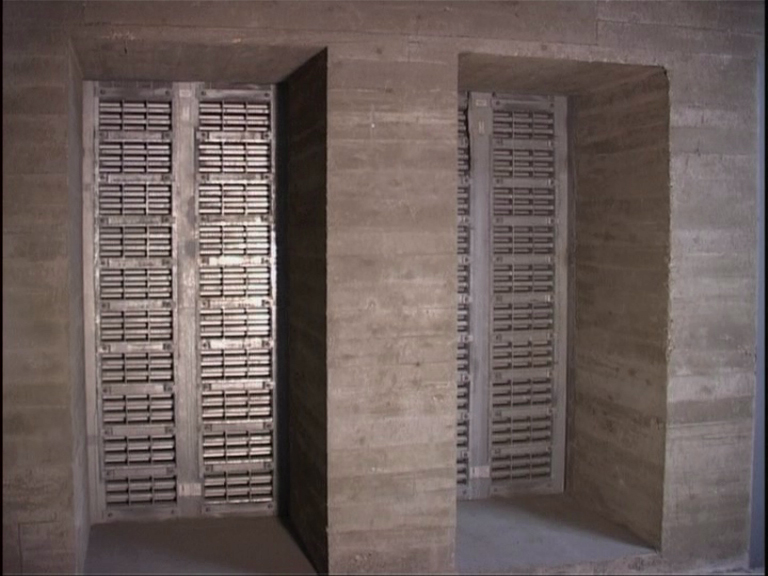
Essential equipment for your air filtration system includes:
Blast Valves
- Protects against overpressure and shock waves
- Ensures the integrity of the shelter is maintained during an explosive event
Pre-Filters and NBC Filters
- Pre-Filters: Capture large particles before they reach the NBC filters
- NBC Filters: Remove nuclear, biological, and chemical contaminants from the air
- Maintains a clean air supply inside the shelter
Electric Blowers and Overpressure Valves
- Electric Blowers: Ensure air is circulated at the correct feet per minute rate to keep the environment inside the shelter safe
- Overpressure Valves: Prevent toxic air from entering by maintaining a positive pressure inside the shelter
- Critical for preventing dangerous CO2 concentration and ensuring a toxic-free area
Incorporating these air filtration systems and essential equipment within your bunker will safeguard you and your loved ones, providing a lifeline in scenarios where the outside world is no longer safe.
Expert Insights
Understanding the nuances of NBC filtration systems from expert insights can significantly enhance your bunker’s safety and efficiency. As you dive into the realm of long-term bunker living, it’s crucial to grasp that these systems aren’t one-size-fits-all. Experts categorize them based on their application—shelters, mobile platforms, and field camps—each tailored with specific specifications to meet diverse needs.
For people building their safe havens, knowing the difference between simple escape shelters and advanced NBC shelters is key. The latter offers airtight designs and air regeneration systems, ensuring maximum protection. The filtration process itself varies, employing both pulling and pushing techniques through components like blast valves, pre-filters, and NBC filters, all powered by electric blowers.
Expert insights emphasize the importance of proper ventilation. It’s not just about keeping contaminated air out but also maintaining oxygen levels, removing pollutants, and ensuring a continuous supply of fresh, filtered air. This balance is critical for creating a toxic-free area and protecting against contaminated environments, highlighting the role of overpressure in preventing dangerous gas concentrations from seeping in.
Following these guidelines, you’ll be well on your way to securing a safe and efficient living space underground.
Conclusion
You’ve now got the essentials on NBC air filtration for long-term bunker living. Remember, the right system keeps your air clean and safe. Consider your shelter type, choose the best filtration process, and don’t skimp on maintenance.
With this guide, you’re better equipped to select, install, and upkeep your air filtration system. Trust in expert advice and prioritize your air quality. Your well-being underground depends on it.
Stay informed, stay prepared, and breathe easy knowing you’re covered.

